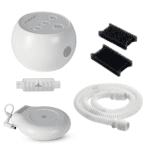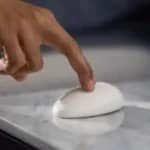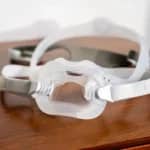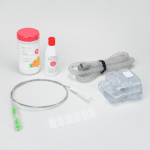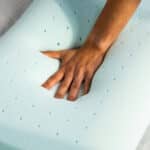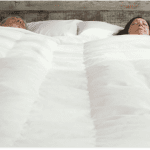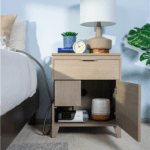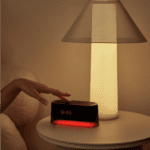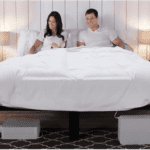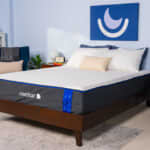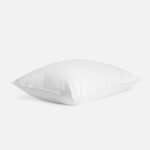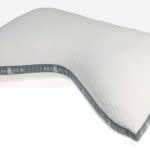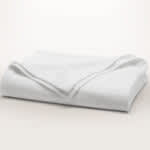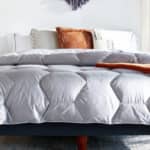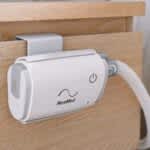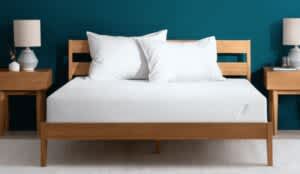Many people place their mattress on a bed frame with a box spring or foundation for support and lift. This usually makes it easier to get in and out of bed while giving the bedroom a more traditional look. However, putting a mattress directly on the floor can simplify your setup and carry other potential pros and cons.
To determine whether placing a mattress on the floor is the best choice for you, consider your sleep environment, your health requirements, and your mattress manufacturer’s guidelines.
Is It OK to Place a Mattress Directly on the Floor?
Depending on the model, you can generally place your mattress directly on the floor. However, mattress companies often have terms and conditions stipulating that using a mattress on the floor without a proper base voids the warranty. That said, there are certain advantages to putting a mattress on the floor.
Advantages of Placing a Mattress on the Floor
People choose to place mattresses directly on the floor for various reasons, including cost and space considerations.
Reduces Back and Neck Pain
The floor is firm and level, providing even support for a sleep surface. Limiting sinkage and sagging can enhance spinal alignment and potentially reduce back and neck pain.
Promotes Healthy Blood Flow
A mattress placed on the floor distributes weight more evenly than some alternatives, potentially limiting pressure points that could otherwise restrict blood flow. Better circulation may improve the functioning of the lungs, heart, and immune system while aiding muscle recovery.
Saves Money and Space
Forgoing a bed frame and box spring or foundation can save you hundreds of dollars. Additionally, it can make small rooms look bigger and less cluttered.
Disadvantages of Placing a Mattress on the Floor
While placing a mattress on the floor has benefits, it isn’t for everyone. Sleeping on a mattress without a bed frame and box spring or foundation can be problematic in some circumstances.
Susceptible to Dust and Mold
A mattress is more susceptible to dust and mold when it’s placed on the floor. In humid climates, mold and mildew can grow on the underside of the mattress since there is little to no airflow underneath.
Aggravates Allergies
Because the sleeper is close to the ground when their mattress is on the floor, they may be exposed to more allergens. Mold, mildew, and dust mites can cause itchy eyes, nasal congestion, coughing, and other symptoms for allergy sufferers.
Poor Support for Side Sleepers
Side sleepers require extra contouring to cradle their hips and shoulders while supporting their spines. When a mattress is directly on the floor, the firmer support may prevent their shoulders and hips from sinking in enough.
Sleeps Cold for Cold Climates
Maintaining the right temperature is critical for good sleep hygiene. Since heat rises, the floor is cooler than the rest of the room. Some sleepers may feel too cold on a mattress placed directly on the floor, especially during the winter months. On the other hand, the lower temperature of the floor may be ideal during the summer and in warm climates.
Let Us Help You Find the Perfect Bed
Answer a few questions to find the right mattress for your unique needs
Tips for Sleeping on a Mattress Placed Directly on the Floor
If you plan to put your mattress on the floor, there are a few things to keep in mind. Most models are designed for use with a bed frame and box spring or foundation, so take care when choosing to put your mattress on the floor.
Check the Warranty
Mattress warranty policies often specify the type of support a mattress requires. In some cases, placing the mattress on the floor may void the warranty. Review the terms of the policy carefully to ensure you comply.
Keep the Floor Clean and Dry
Keep the floor around your mattress clean and dry to limit allergens and promote a healthy sleep environment. Consider cleaning your mattress periodically and using a mattress protector as an additional safeguard.
Circulate the Air
The underside of a mattress placed on the floor gets little airflow, increasing the likelihood of mold growth. Air out your mattress once a week by leaning it on its side against a wall.
Insulate and Anchor the Mattress
Place foam, cardboard, plywood, or a blanket under your mattress to help regulate the temperature. This may be especially important with wood and tile flooring, which tends to feel cool to the touch. You may also need to anchor the mattress so that it does not slide around. Rubber pads and non-slip mattress pads are often effective.


